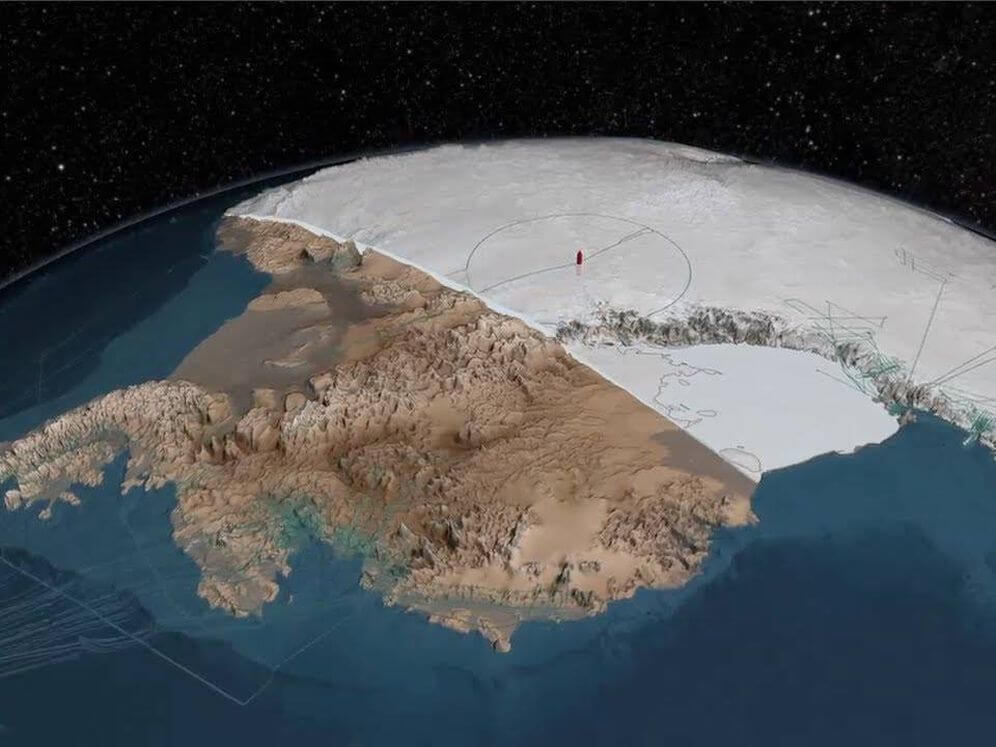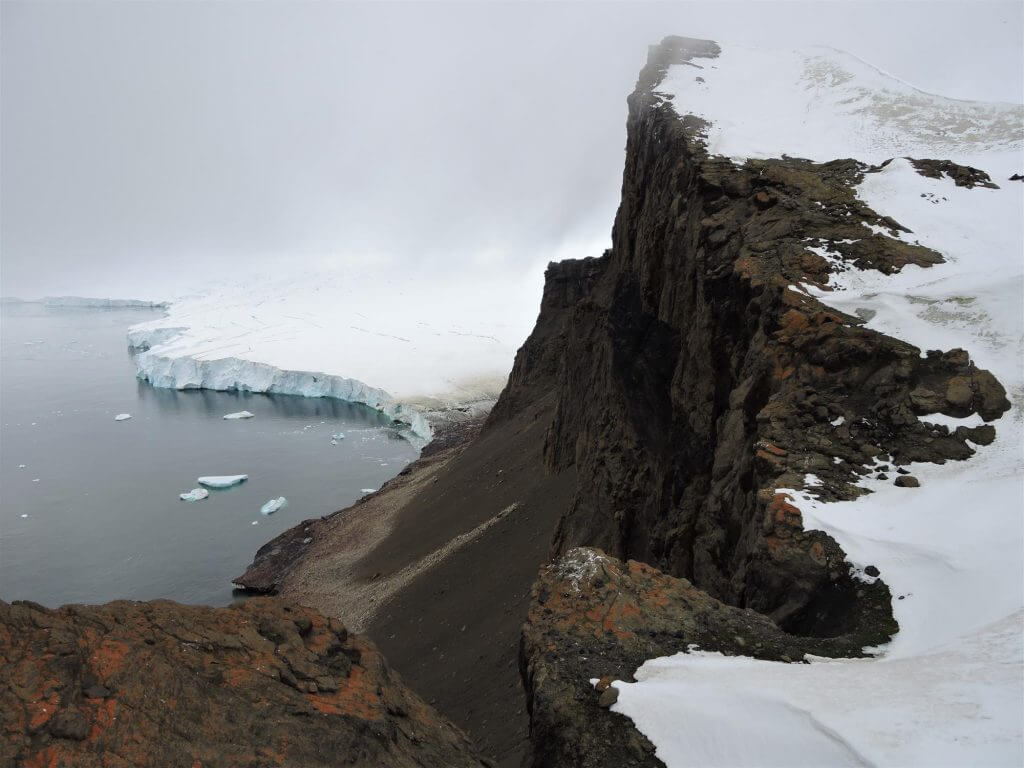Antarctica as we know it is fading away; It began to disappear between about 30 and 40 years ago. And although scientists cannot predict the exact date of a complete meltdown, there is a possibility that it will happen. Researchers from the University of California and NASA scientists have stated that: “it is only a matter of time, it is important to know if this will happen in a period of 500 years, or in less than 100”. It is possible that future generations can only be aware of the existence of what was this frozen continent through what they will consider some backward and primitive satellite photos.
What no one has seen so far: this is Antarctica under the ice
Under the ice of Antarctica there is solid land, an entire continent that we can barely glimpse from scientific bases, when at this time the austral summer begins and new expeditions arrive. However, we now know more precisely what lies beneath that white layer and how vulnerable it is to climate change. A team of glaciologists led by the University of California at Irvine has published the most accurate topographic map ever produced (Image 1).
Radars and calculations on the movement of the ice draw the contours of the white continent and reveal a new map with surprises never seen before. And it is that, under the Arctic ice, there is an underlying land content that sooner or later, with the collapse of the ice , will rise to the surface. Once the indlandsis (the ice cap that covers a continental surface) of Antarctica succumbs to the increase in temperature, it is assumed that new and unknown ecosystems will settle on the emerging territory. Today it is known that under the mass of ice there is a whole system of underground rivers and lakes.

It is precisely Antarctica where up to 80% of the Earth’s fresh water is stored, in addition to being the continent with the highest average underground humidity. In this sense, scientists have referred to Antarctica and its microorganisms as the largest moisture ecosystem in the world, and for this reason, they are now redirecting their gaze, this time not paying so much attention to the disappearing ice, but to the new world that currently lies hidden under this one, perhaps, waiting patiently for its turn [1].
From white to green
Climate change is causing parts of coastal Antarctica to turn green from algal blooms, which spread as temperatures rise. You can see from space the growth of microscopic algae in parts of Antarctica, which is turning the white continent green due to climate change (Image 2).

This green snow will spread across Antarctica as global temperatures continue to rise. The journal Nature in its article entitled “Citimate change drives expansion of Antarctic ice-free habitat” published in its first quantitative assessment of the impact of climate change on the ice-free areas of Antarctica during the 21st century. The ice-free area currently covers only 1% of the continent, however, it is home to the entire Antarctic terrestrial biodiversity. Thus, the article defends that in the study of the dynamics of the continent this biodiversity has been unduly considered and overlooked in much of the research [2].
For years, the main focus of attention in the study of climate change in the Antarctic continent has focused on the dynamics of the ice and its effects on sea level or salinity. This has led to a significant lack in our understanding of their impact on Antarctic species, potential emerging ecosystems, as well as their future conservation.
In contrast, assessment of how native Antarctic species, including everything from seals, seabirds, arthropods, nematodes to plant species and microorganisms, are affected by global warming began relatively recently.
It is possible that in some parts of the continent, such as the Western Antarctic Peninsula, the ice-free areas may triple. But for the research team, the situation is reversible. “To avoid the melting of most of Antarctica, we must leave most of the fossil fuels in the subsoil,” reports the expert, who assures that this would completely change our energy production and consumption systems. “In this way we will not use the atmosphere as a dump for CO 2 “. The study shows that, if the increase in temperatures does not exceed 2 ºC, the melting of the frozen continent would cause increases in sea level of only a few meters and they would still be manageable. However, further global warming could change the eastern and western ice sheets categorically, with each additional tenth of a degree increasing the risk of complete and irreversible loss of Antarctic ice.
The Intergovernmental Panel on Climate Change (IPCC) estimates that there are still 10 billion tons of oil, gas and coal reserves left in the ground. The burning of these fossil fuels will release significant carbon dioxide emissions into the atmosphere, causing an increase in ocean temperatures and the consequent melting of Antarctica. But what would happen if the entire frozen continent melted? [3].
The importance of Antarctica is that of being a reserve of unique species. Experiments done on bases in Antarctica are valuable, but they must be done with care and consideration for the existing biota. It is necessary to reduce the impact of global warming, not only individually but collectively. Objectives such as those of the Paris Agreement (anthropogenic temperature increase of less than or equal to 2 °C), if met, will reduce the impact on the biodiversity of the frozen continent [4].
The image of a green Antarctica is at least curious, even fantastic. But if you ask me, I prefer it a thousand times white.
Bibliographic reference
[1] https://www.nationalgeographic.com.es/temas/change-climatico.
[2] Lee J expansion of Antarctic ice-free habitat. Nature. 2017 Jul 6;547(7661):49-54. doi:10.1038/nature22996. Epub 2017 Jun 28. PMID: 28658207.R, Raymond B, Bracegirdle TJ, Chadès I, Fuller RA, Shaw JD, Terauds A. Climate change drives.
[3]Winkelmann, R., Levermann, A., Ridgwell, K., Caldeira, K. (2015). “Combustion of available fossil-
fuel resources sufficient to eliminate the Antarctic Ice Sheet”.
[4]. United Nations Framework Convention on Climate Change. Conference of the Parties to the United Nations Framework Convention on Climate Change; 2015.


